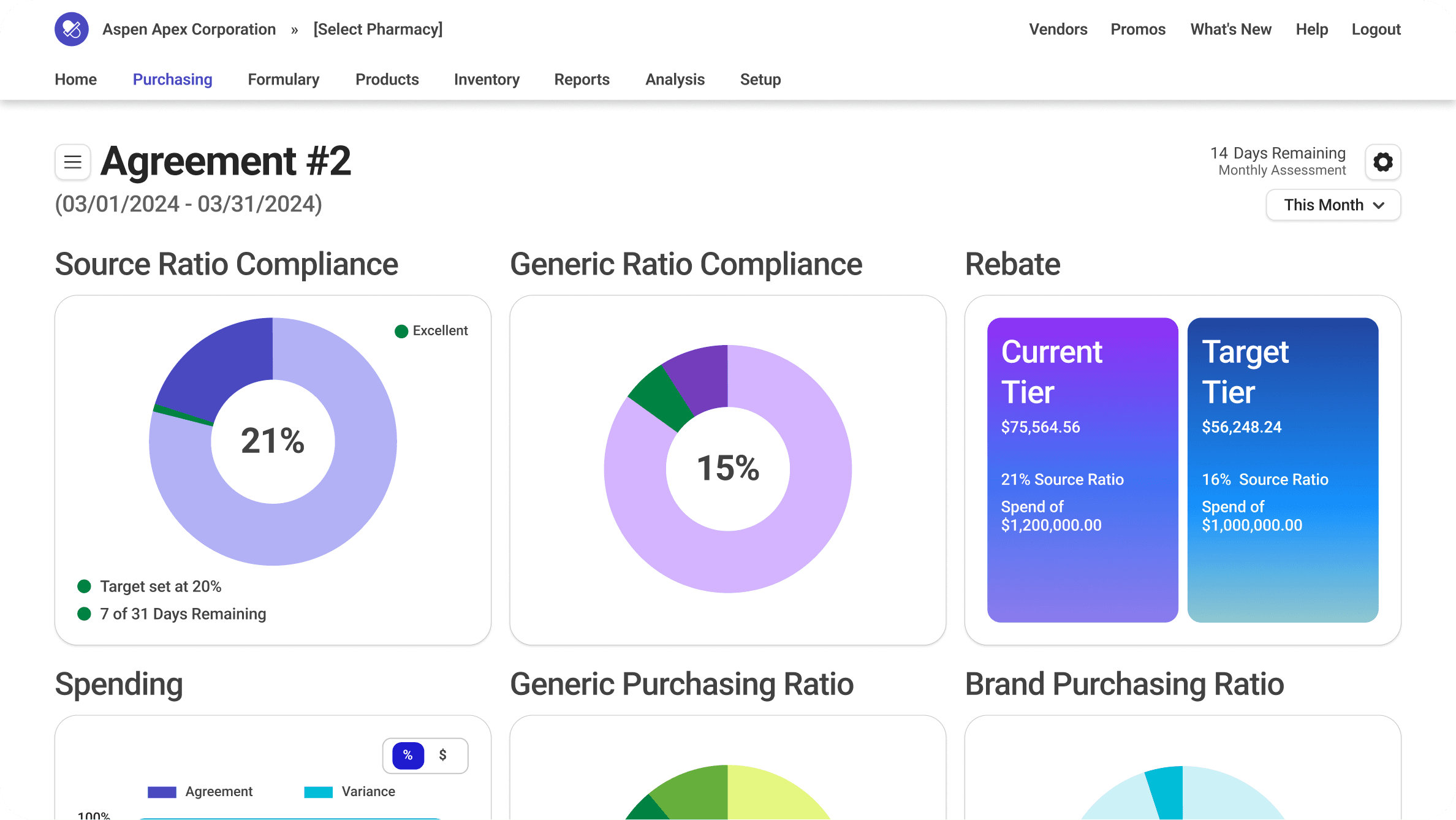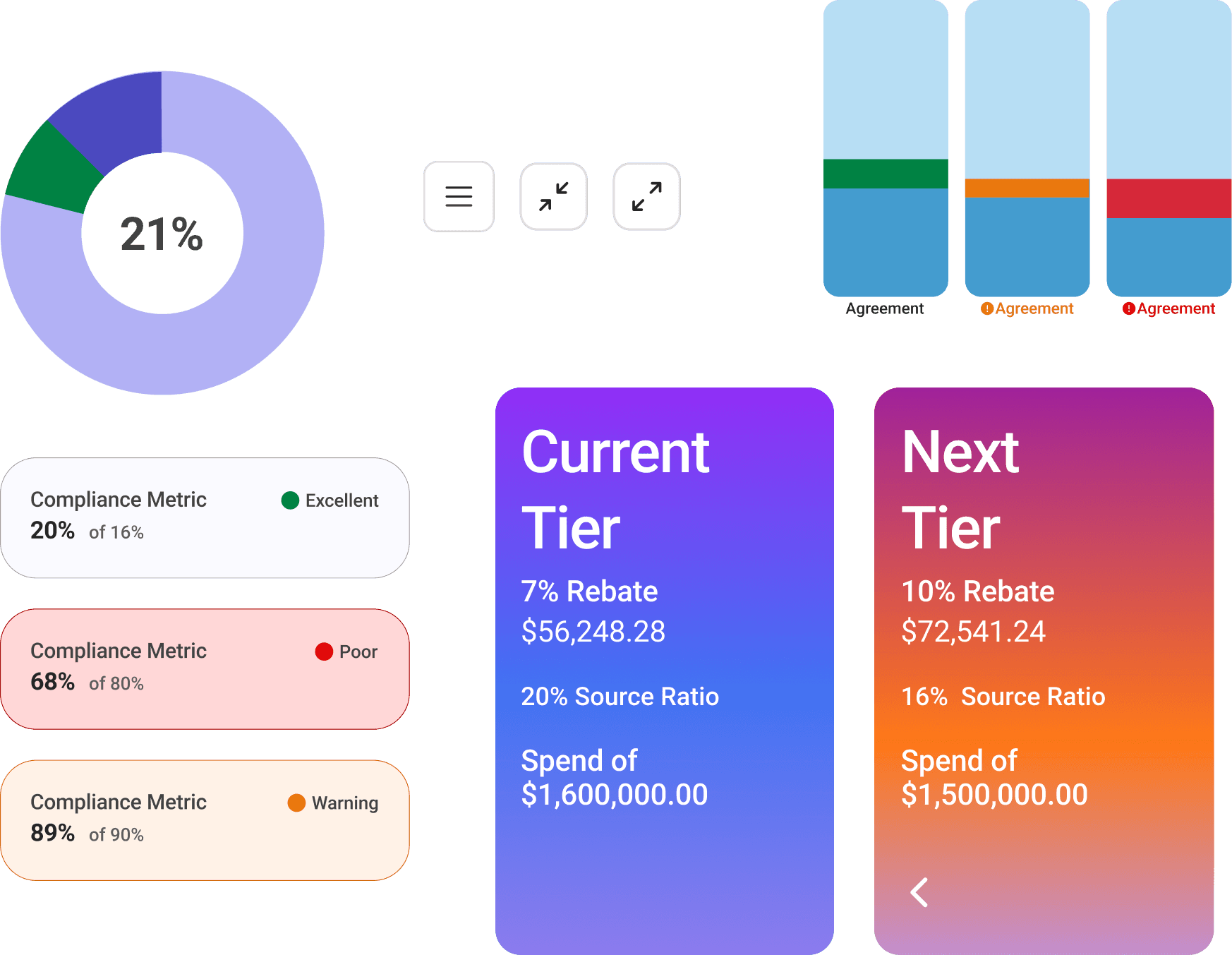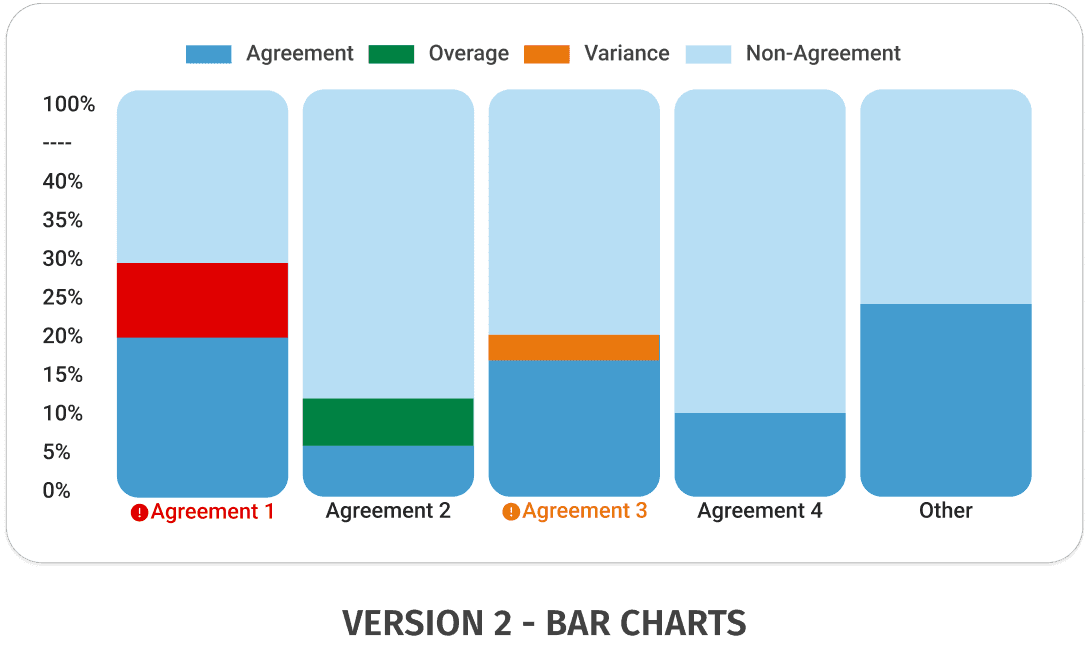April 3, 2025
|
Web Design
UX
UI
6 min read
12 Weeks
1 Designer
2 Product Managers
4 Developers
2 QA Engineers
Project Overview
summary
As the premier procurement solution for pharmacies, SureCost has been dominating the market for over ten years.
In the past ten years, the complexity of vendor agreements and shifting regulations has made it harder for many pharmacies to stay afloat. For some, navigating these challenges has meant the difference between success and closure. SureCost recognized that helping pharmacies stay compliant wasn’t just about ticking boxes—it was about making their lives easier, so they could focus on providing the best care and products to their communities.
audio Story
Listen to an AI-narrated version of the story behind this project.
The Problem
Pharmacies rely on vendor agreements to get the right products at the right price. But these contracts are often dense, inconsistent, and hard to track, especially across multiple vendors. Missing a clause can mean losing out on rebates or falling out of compliance, which adds stress for both frontline purchasers and leadership.
The Solution
A visual dashboard that brings clarity to each agreement. By showing key compliance metrics at a glance and offering drill-down views when needed, the system helps teams stay aligned and act before problems escalate.
Misc/30
Misc/40
Misc/50
Misc/60
Expanded color options to enhance visual hierarchy.
Constraints
Highly Configurable - Before, users used enrollments, which had no live-visualizations. The new agreement engine allowed users to group together like vendor enrollments (i.e., a primary and secondary) to monitor live compliance required via their contracts.
Drill Down Details - Given that an overview never tells the full story, users needed multiple avenues to dive deep into their data to get more specific looks at the required metrics.
Raise Problem Areas - Staffing shortages and differing priorities around compliance made bold, clear visuals essential for guiding users and encouraging alignment.
How I Solved It
The ambitious timeline for building the backend Agreement engine and front-end visualizations pushed us to move quickly.
user research
The Product Manager and I conducted research with our Customer Advisory Board and internal SMEs. User interviews revealed a need for both high-level metric overviews and deeper insights for our ‘C-Suite’ users. They also revealed a need for strong alerting for our day-to-day Pharmacy Purchasers on the ground. The key components included source ratio (percentage of total purchases from the primary vendor), generics ratio (percentage of generic purchases from the primary vendor), minimum spend (the required spend with the primary vendor), and rebate tracking.
Prototypes
Guided by user feedback gathered through Maze, I introduced chart alerts that allowed users to click on problem areas and reveal a detailed drawer with more context. I also developed the Agreement Overview, a high-level snapshot of key metrics like source, generic, and primary vendor ratios, plus required minimum spend. From there, users could dive deeper into an agreement-specific dashboard to explore their compliance in detail—putting more actionable insight directly into their hands.
Challenges
Midway through the project, the original Product Manager transitioned out, and a new PM stepped in. With some work still in flight, we revisited customers to validate our high-fidelity designs. Feedback showed the donut comparison between Source Ratio and Generics Ratio wasn’t resonating. Users found it harder to quickly interpret the differences between the two ratios. After exploring other chart types, we landed on bar charts. The simplicity and clarity of bar charts provided not only a clearer comparison but also the added benefit of displaying more detailed data about the struggling agreements, making it easier for users to identify and act on potential issues. Within days, we had updated high-fidelity mocks for the separate Source and Generic Ratio Compliance charts ready for development.
Impact
Outcomes
Users were extremely pleased with the outcome. Here’s some of the feedback we received after release:
“A lot of information squeezed into a small space that one can easily see is exciting (no need to go digging in the Analysis tab).” - Customer
“This is going to change everything. When does it launch?” - Customer
This feedback clearly validated that the update would make a significant difference. While the excitement was palpable, it also reinforced the fact that pharmacies were eager for a solution that could streamline compliance tasks and reduce friction in their day-to-day operations.
Retrospective
After the release, customers responded positively to the updated experience, and we successfully onboarded a large enterprise client. In hindsight, I would’ve spent more time with purchasers who use analytics less frequently to improve clarity in graph labeling, as some feedback indicated confusion around the data being presented.
Compliance Insights has launched into production on SureCost as of May 2024.
Related links




